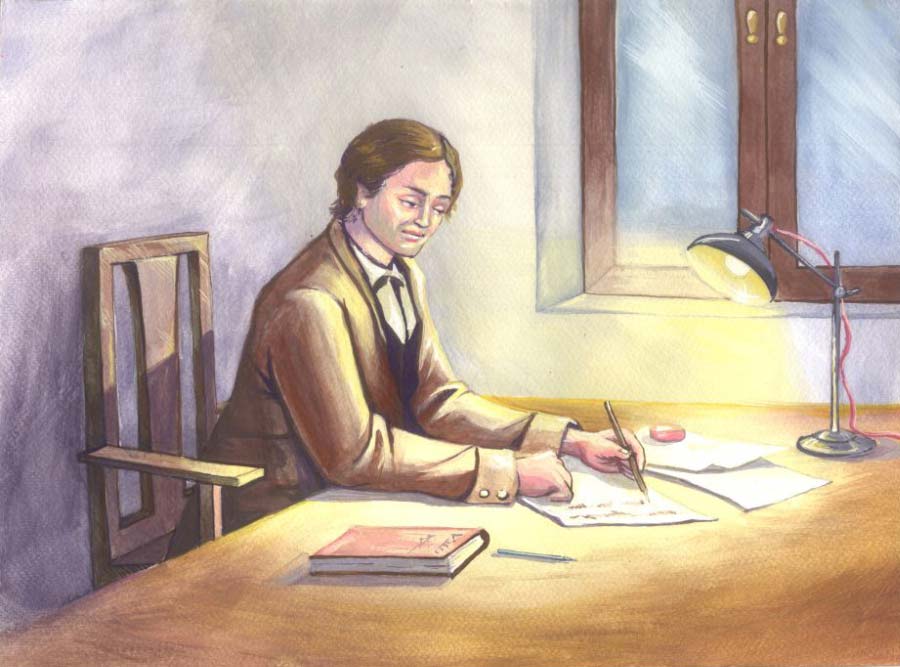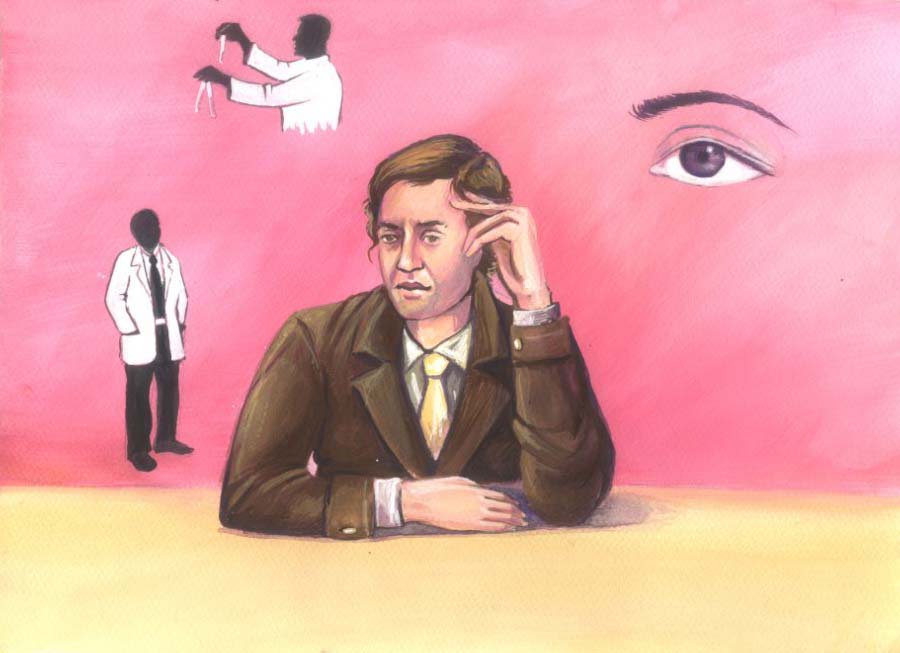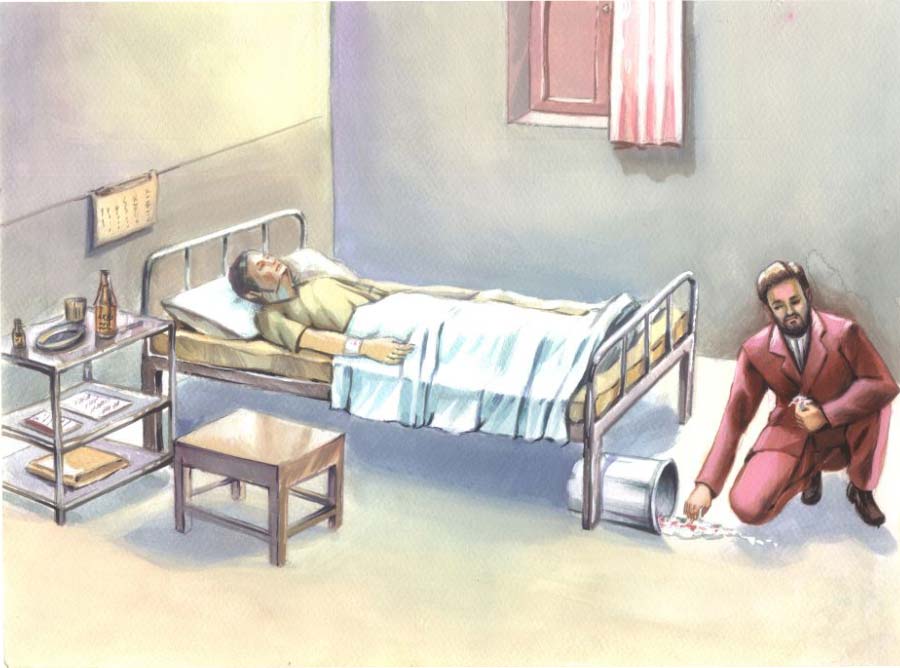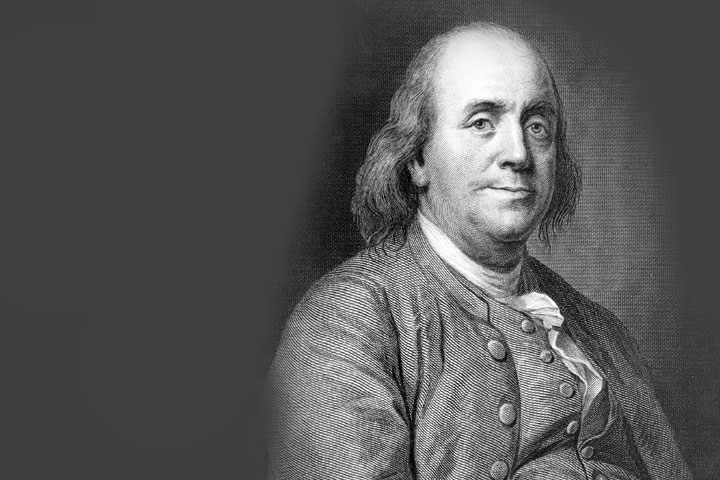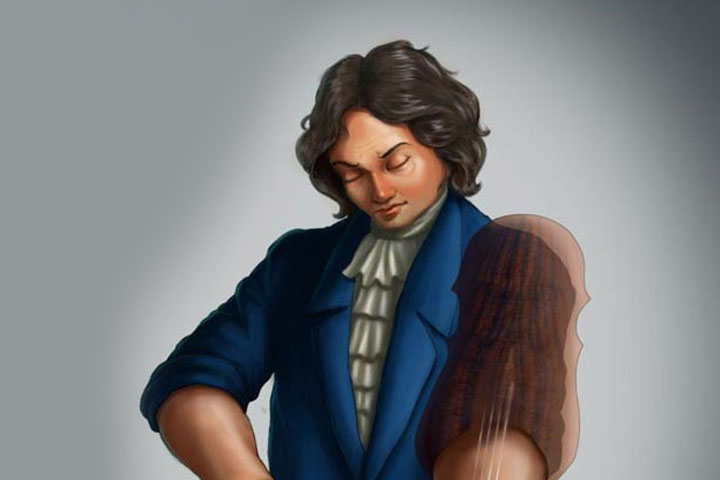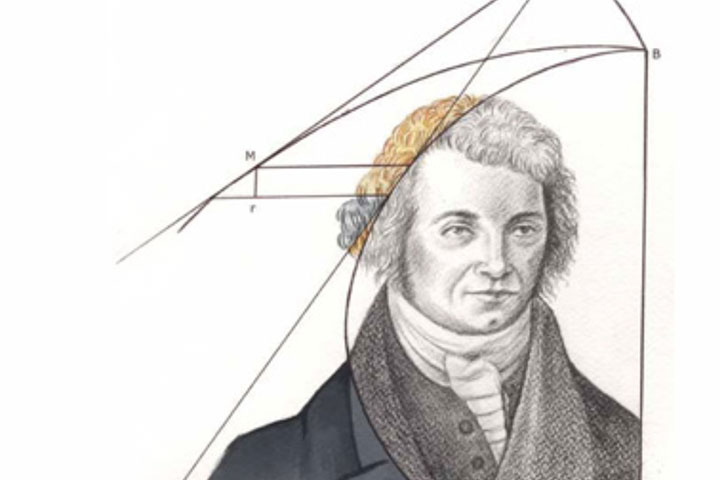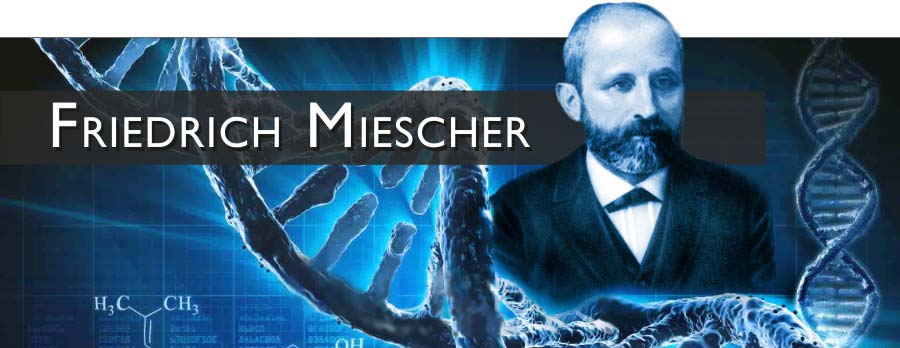
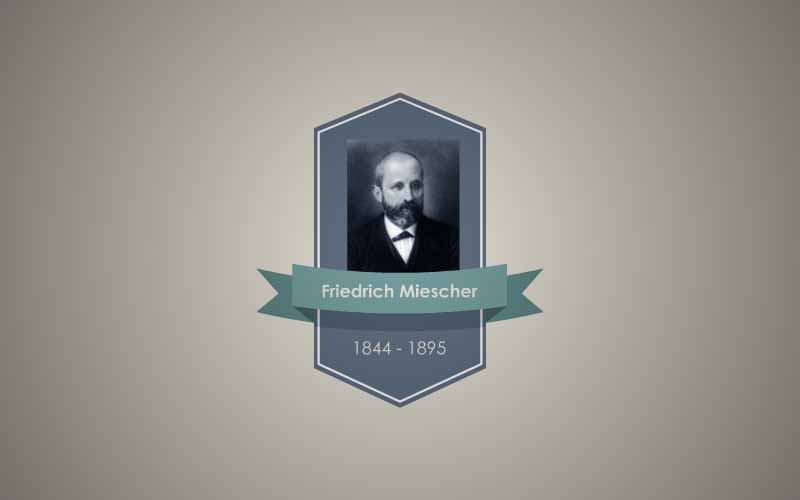
Introduction
Why do we share so many of our parents’ traits? The colour of the eyes, the shape of the nose, the tendency to put on weight, to suffer a heart attack or to even start balding prematurely…parents bestow upon us an astonishing amount of things when we are even less than a minute old in this world. But ever wondered how this really happens? How are all these traits passed on from a parent to a child? Since the beginning of civilization, man has strived to unravel this puzzle and therefore, it seems so weird that when this colossal mystery was finally solved, the world chose to ignore it for almost a century.
We now know that this remarkable feat was performed by a small molecule called ‘Deoxyribonucleic Acid’ or ‘DNA’. Dubbed as ‘The molecule of life’, the discovery of DNA changed our world in unprecedented ways. However, few people know the truth about the discoverer of DNA and how the theory actually came to life. Most people would say ‘Watson and Crick’ as the discoverer. Some would give the year as well: 1953. An enlightened few might also mention that it was the work done by Avery, Macleod and McCarty in the 1940s. But all of them would be wrong because DNA was discovered way back in 1869, when a young Swiss scientist Friedrich Miescher accidentally stumbled upon it behind the thick walls of Tübingen Castle.

Early Years
The city-state of Basel lies in northwest Switzerland on the river Rhine. It is a place of great scenic beauty filled with lush meadows, fields and forests. Basel is a German-speaking state which was split into two parts: Basel-City and Basel-Country, in 1833, following a revolt by the citizens belonging to the countryside. The city functions as a major industrial centre for the chemical and pharmaceutical industry. It is also a major financial hub, and houses the oldest University of the Swiss confederation founded by Pope Pius in 1460. It was in this city that Johann Friedrich Miescher was born on August 13, 1844.
Friedrich was born into a family of scientists. He was named after his father, Friedrich Miescher who was a Professor of Pathologic Anatomy at ‘The Basel University’ and a successful practising gynaecologist. His mother, ‘Charlotte Antonie His’, belonged to the famous ‘His’ family, which traced its descent from the noted statesman and historian ‘Peter Ochs’. Friedrich’s maternal uncle, ‘Wilhelm His’, was a famous embryologist who taught Anatomy and Physiology at the ‘Basel University’. Wilhelm His had a deep and lifelong influence on his nephew. The family belonged to the intellectual elite of the city and enjoyed a wide circle of friends.
The Miescher household was filled with music, books and other intellectual pursuits. Many scientists visited their home and the lively discussions exposed Friedrich to a host of scientific ideas at a very early age. Living in such an intellectual atmosphere, Friedrich developed an early interest in science. The young Johanne Friedrich, known as Fritz to his family and friends, was a shy and introvert child. He loved being by himself and spending his time just thinking.
Perhaps, it had something to do with his hearing handicap contracted by an early attack of typhus. Despite this, he shared his father’s love for music. His father was a talented singer and often gave public concerts.
Young Fritz was a highly intelligent boy. Most of his immediate circle of friends became outstanding in later years but it was only young Fritz who had a scholastic mindset right from childhood. Understandably, he did very well at school and graduated as the top of his class. Since Fritz was born into a family of doctors, it was assumed that he would also join the medical fraternity. But such was not the case as Fritz wanted to become a Priest. However, as his father was not too happy with this decision, Fritz gave up his thoughts of priesthood and decided to pursue a career in medicine.

Becoming a Doctor
In the year 1863, at the age of 17, Fritz began his medical education at the ‘Basel Medical School’. During the summer of 1865, while he was still a medical student, he went to Gottingen to work in the laboratory of organic chemist ‘Adolf Strecker’. His time there was uneventful but on returning to Basel he contracted typhoid. In those days, typhoid was a dreaded disease as its cause was unknown and there were no antibiotics available in the market. Fritz had to break off from his studies for almost a year to recuperate. He finally completed his MD in 1868 at the young age of 23.
This should have been a very joyous occasion for the young doctor but his thoughts were far from happy. He now had to decide which speciality of medicine he should pursue. Fritz was conscious of the difficulties which his hearing handicap would pose should he choose a field which required the use of a stethoscope. Finally, he wrote an elaborate letter to his father wherein he listed the pros and cons of all the different options available to him. He thought of pursuing either ‘Ophthalmology’ (the study of the anatomy and diseases of the eye) or ‘Otology’ (the study of the anatomy and diseases of the ear), as these were disciplines that did not require the aid of a stethoscope.
At the same time, he stated that he had a fascination for research: “It was only in the lectures on Physiology that the entire splendour of research on organic matters became apparent to me.” So, Fritz worked out a compromise-he would build a career in ophthalmology and do research in his spare time.
His father showed this letter to his uncle, Wilhelm His and the latter immediately saw that the compromise solution would not work. He wrote Fritz a letter, encouraging him to do whatever he felt would be best. He wrote:
Dear Fritz,
I cannot doubt your aptitude for work, and I’m certain your achievement will be high, if your optimistic mood is well maintained. Your own self confidence and dedication are all you require; not empty, foolish, over-confidence that cannot make mistakes-but to aspire to self-reliant, continuous work: giving of your best, you will become the best. Though doubts in other fields will still lurk, your individuality from the rest will be assured; so take from this good heart and choose your field – then set yourself apart.
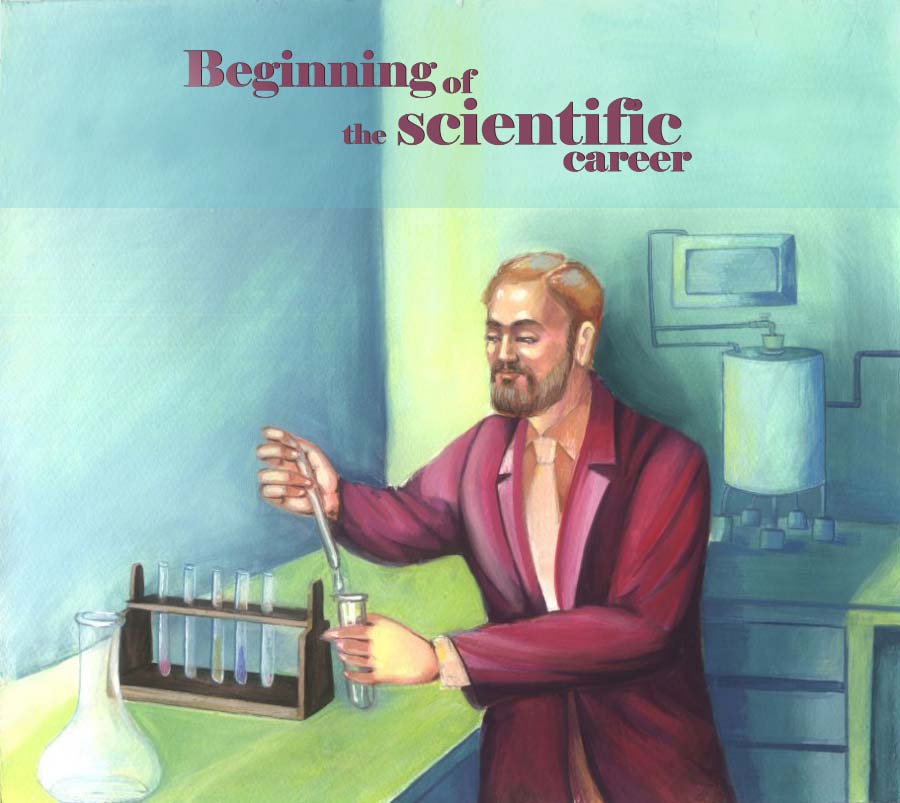
Beginning of the Scientific Career
Isn’t it amazing as to what wonders a good and true piece of advice can do for a person! Fritz’s case was no different, as he got immensely inspired from his uncle’s letter and decided to go in for chemical research. Flamed by his uncle’s words on excellence, he decided to work with the top men in the field. Accordingly, he spent a semester in the laboratory of Adolf Strecker in Tübingen to get acquainted with the techniques of organic chemistry. In those days, the concept of getting ‘trained’ in research was quite new. Prior to that period, research was pursued either by the rich as a hobby or by groups of amateurs gathered under the ambit of an academy or society.
Once through with his training, Friedrich joined the laboratory of ‘Felix Hoppe-Seyler’, one of the towering personalities of that time. Hoppe-Seyler was a pioneer in Biochemistry and Molecular Biology and had many important discoveries to his name.
One of his most famous works involved the identification of haemoglobin. He is also credited for coining the term ‘proteid’ which we now know as protein. Between 1860 and 1871, Hoppe-Seyler headed one of the first biochemical laboratories worldwide. His laboratory was located high above the Neckar river valley in Tübingen Castle. Hoppe-Seyler’s laboratory was in a converted laundry room, whereas Friedrich was put in the former’s kitchen. Fritz was thrilled to be working with such an eminent scientist and he eagerly set out to design his experiments. Little did he know that he would soon be stumbling upon one of the greatest scientific discoveries of all time!
Influenced by his uncle’s conviction, ‘the ultimate questions about the development of tissues can be solved only by way of chemistry’, Fritz decided to investigate the chemistry of the cell. Hoppe-Seyler who was interested in the chemistry of body fluids wanted to investigate a white blood cell known as the ‘lymphocyte’ which he believed would help in understanding the formation of pus during infections. It was indeed an ideal partnership as Fritz wanted to investigate the chemistry of the cell and Hoppe-Seyler had the perfect cell for him to investigate.
Filled with vigour, Fritz began his work on lymphocytes in the autumn of 1868. But he was soon brought up short by a complication. Extracting lymphocytes from a person’s lymph glands was a difficult task and even if the extraction was made, the quantity that was extracted proved to be too little to work with. Hoppe-Seyler, with his long standing interest in blood, advised him to switch to the closely related ‘leukocytes’. Leukocyte is a type of white blood cell which is present in large quantities in the pus occurring in infections. The material for this research was easily available as all Fritz had to do was visit a nearby hospital which was tending to many soldiers wounded in the on-going Crimean war fought by England and France with Russia. There was no dearth of bandages oozing with blood and pus at the hospital and Fritz carried armfuls of bandages back to his laboratory.
In this way, the discovery of DNA made a rather bloody beginning.
Start of the experiments - The first breakthrough
Now that Fritz had his source material, he faced the next challenge of washing the cells without damaging them. He tried several salt solutions but the cells swelled into a sticky porridge-like consistency which then became impossible to work with. Finally, after many failed attempts, Fritz hit on a solution of water and sodium sulphate to rinse the bandages. Then, he filtered the cells through a sheet to remove the cotton fibres of the bandaging. He had to leave the beaker holding the filtered solution stand undisturbed for quite some days to allow the cells to settle out at the bottom.
Once this process was over, Fritz set out to characterize and categorize the different proteins he found in the cells. However, Fritz faced many difficulties with regards to his experiments and research as the methods and equipment available at that time were too primitive for such an analysis. Ultimately, he succeeded in distinguishing five ‘proteins’, the fifth being unlike any other protein known at that time. This mysterious substance would precipitate when the solution was acidified and then re-dissolve when the solution was made more alkaline.
On February 26, 1869, Fritz wrote a letter to his uncle Wilhelm His reporting the discovery of this mysterious substance: “I could obtain precipitates that could not be dissolved either in water, acetic acid, very dilute hydrochloric acid or in solutions of sodium chloride and which thus would not belong to any of the hitherto known proteins.” Unbeknown to Fritz, he had successfully obtained the first crude precipitate of DNA. Though Fritz was highly excited by his discovery, he was oblivious about its magnitude.

The Probe Continues
To conduct further experiments on this mysterious substance, Fritz now had to undertake a task which had never been accomplished before: the isolation of nuclei cell, which meant that he had to find a way to isolate the nuclei from the cytoplasm (a jelly like substance which fills the cell). After much trial and error, he finally discovered a method to achieve this. Fritz treated the cells with diluted hydrochloric acid for several weeks. It was essential that this work be done in the cold else the material would degrade. One can just imagine Fritz working away in his laboratory at Tübingen Castle with the windows wide open to the cold winter and temperatures barely above freezing.
Once treated, he shook the residue with a mixture of water and ether for an extended period of time. The nuclei accumulated at the bottom of the vessel in a fine powder form. This substance exhibited the same acid-insoluble, alkali-soluble properties of the fifth ‘protein’ which he had extracted from the whole leukocytes. Even now, Fritz remained blissfully unaware of finding a substance which was NOT a protein.

On the Brink of a Major Discovery
Fritz now needed greater quantities of this mysterious substance if he had to characterize it further. Also, the nuclein which he extracted needed to be more pure. For this, he had to find a way to remove as much of the contaminating cytoplasm as possible. But how was this to be achieved? Fortunately for Fritz, the answer to his problem lay in a method developed just a year back by physiologist Wilhelm Kuhn. Kuhne had observed that the cell cytoplasm could be dissolved by solutions containing the enzyme ‘pepsin’. Furthermore, this enzyme left the nuclei unaffected, which was perfect for Fritz’s work. Unfortunately, in those days, pepsin could not be bought ready made from a chemical supplier. So once again, Fritz had to dig his hands into something rather garish.
Now, finally Fritz had an optimized protocol to isolate the DNA. He began by washing the leukocytes several times with warm alcohol, and then digested the residue with his pepsin solution. He obtained a fine, grey powder of pure nuclei, which he shook in ether and again washed in alcohol. This substance displayed properties shown earlier by the fifth protein and the nuclei contaminated with protein. Finally Fritz had his first clean preparation of the DNA!

DNA is Discovered
Fritz now proceeded to determine the composition of elements of this new substance. Here he was in for a surprise. He not only detected carbon, hydrogen, nitrogen and oxygen, elements which are commonly found in organic molecules, but also exceptionally high amounts of phosphorus. Further, unlike protein, this substance lacked sulphur. These results convinced Fritz that he was dealing with an entirely new type of molecule. He concluded, “We rather have here entities sue generis not comparable to any hitherto known group.” Since he had found the new substance in the cell nuclein, he named it nuclein; what we now know as DNA.
He also found nuclein in kidney, liver, testes, nucleated erythrocytes and yeast cells. Fritz was confident that nuclein ‘will prove equal in importance to proteins’. Fritz’s belief was not without reason. At the time that he discovered nuclein, only three categories of substances had been identified in the human body namely, ‘lipids or fats’, ‘polysaccharides (sugars and starches)’ and ‘proteins’. The discovery of a new category of substance at that time was nothing short of ground-breaking.
Off to Leipzig
In the autumn of 1869, Fritz finished his preliminary analysis on nuclein. He then returned to Basel for a short holiday. Here, he began writing his first scientific publication on his analysis on leukocytes, including his discovery of nuclein. Following this holiday, Fritz set off for the Physiology Institute of the University of Leipzig. He had resolved that he would turn his mind to other topics in order to broaden his scientific education.
In Leipzig, he joined the laboratory of noted physiologist ‘Carl Ludwig’. Fritz was interested in learning about the experimental techniques used in Physiology. Ludwig put him to work on investigating the nerve tracts in the spinal cord which transmit pain signals. Though he was his usual meticulous self, Fritz did not find this topic as appealing as leukocytes. He did make some good friends though as Ludwig’s laboratory housed scientists from six different nationalities.
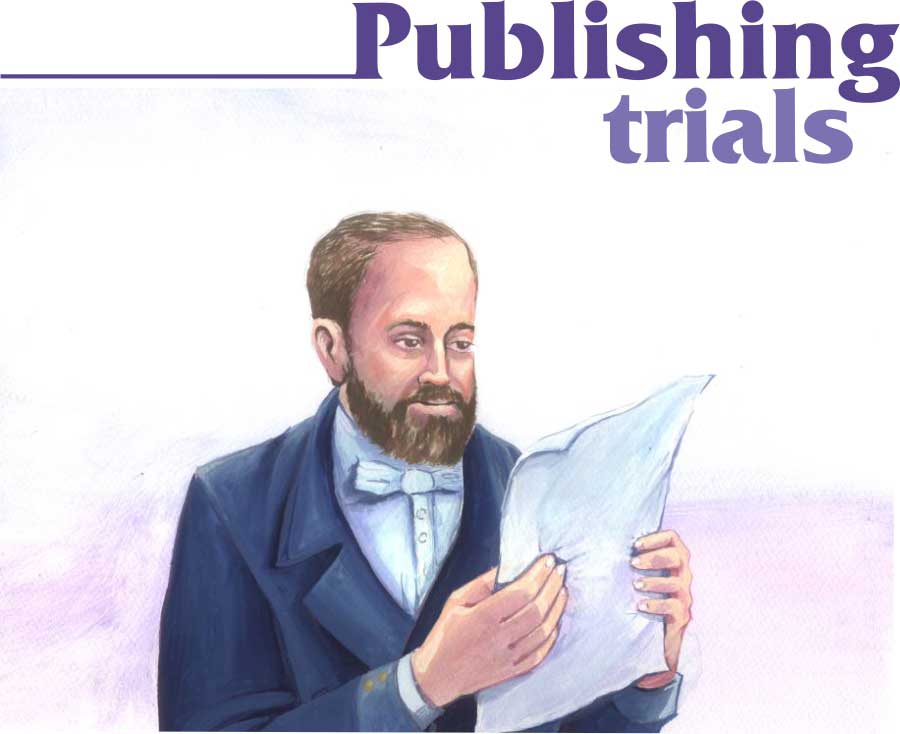
Publishing Trials
While with Ludwig, Fritz completed his article on leukocytes. He wanted to get his article published in the journal ‘Medicinisch-Chemische Untersuchungen’ (Medical-Chemical Investigations) which was run by his old mentor, Hoppe-Seyler. On December 23, 1869, he wrote in a letter to his parents: “On my table lies a sealed and addressed package. It is my manuscript…I am now sending it to Hoppe-Seyler in Tübingen. So the first step towards publication has been taken, provided Hoppe does not refuse.”
But Hoppe-Seyler did refuse, initially. The nature of the discovery was so ground-breaking that Hoppe-Seyler was quite sceptical. To dispel his doubts about Fritz’s findings, he decided to repeat the experiments himself. Hoppe-Seyler’s attitude was not surprising since not long ago his laboratory had been involved in a lengthy dispute involving the existence of a certain molecule in the brain tissue. Also, he was very stringent about the papers that he accepted for publication in his magazine as he had a reputation to maintain.
Though Hoppe-Seyler was optimistic about Fritz’s work, his initial analysis differed from Fritz’s. Hoppe-Seyler cautioned that though these differences might not be meaningful they would delay the publication further. He advised Fritz to send his manuscript to some other journal if he wanted prompt publication of his work as his next journal copy was supposed to be ready only after another two or three months. Fritz replied that since the publication would be delayed only by a few month he was willing to wait but, he expressly asked Hoppe-Seyler to put either the date of writing the manuscript (October 1869) or the date of its receipt for publication, whenever the article was published. He feared that some other scientist might discover nuclein in the meantime, publish on it and get credited for the same.
By the end of July 1870, Fritz started getting anxious as there was still no word from Hoppe-Seyler. He wrote to him that he wanted to send a brief abstract of his work to the Basel Natural Science Reports as he had just become its member. To this, Hoppe-Seyler made no reply and so Fritz again wrote in August, with an increased sense of urgency. Fritz was to start as a lecturer at the Basel Medical School before the start of the New Year. This would require a presentation of his Tübingen work. Fritz needed either his manuscript or the publication proofs as he had not kept a complete draft of his paper. But alas! There was again no response from Hoppe-Seyler.
Things went from bad to worse by the outbreak of the Franco-Prussian war in July 1870. The war interfered with the publication of everything except the daily news. With time, Fritz grew more and more apprehensive about the delay in the publication of his paper. Time and again he wrote to Hoppe-Seyler, respectfully requesting him to speed things up. He even contemplated sending his article to some other journal and requested Hoppe-Seyler to return his manuscript. At long last, after a nerve wrecking year, Hoppe-Seyler replied to Fritz in October 1870. He wrote: “I have just received your second letter and hasten to reply to you this time since now I am certain that you are in Basel. I had scarcely received the earlier letter in which you reported your departure when the war broke out, and I was afraid that my letter might not reach you.”
He reported that he was able to confirm all of Fritz’s statements on nuclein and that he intended to publish Fritz’s manuscript in the next issue of his journal. With the letter, Hoppe-Seyler had enclosed his findings for Fritz’s comments. Fritz was highly elated. He quickly wrote back to Hoppe-Seyler. A few weeks later, he received the proofs of his first publication along with a letter from Hoppe-Seyler saying that the proofs were full of typographical errors and the printers could not understand Fritz’s handwriting.
Finally, Fritz’s paper was published in ‘The Medicinisch-Chemische Untersuchungen’ in early 1871. In addition to Fritz’s piece on nuclein, the magazine comprised two other articles on nuclein: one by another student of Hoppe-Seyler’s reporting nuclei in the nucleated erythrocytes of birds and snakes, and the other written by Hoppe-Seyler himself confirming Fritz’s findings on nuclein.

Return to Basel
Having completed his term with Ludwig, Friedrich returned to his hometown Basel in 1871 and began his duties as a professor at the university. He submitted his ‘Habilitation’ (the highest qualification that can be obtained independently in many European and Asian countries and upon completion of which, the candidate earns the title of Privatdozent) on the Physiology of respiration and became a Privatdozent. He also picked up his studies on nuclein which had taken a backseat during his time with Ludwig. Hoppe-Seyler was also interested in conducting studies on nuclein but had agreed to restrict himself if Friedrich continued working on it.
Friedrich wanted to characterize nuclein in greater detail than what he had managed in Tübingen. But due to poor working conditions his progress was quite slow. In a letter to his friend, he complained: “During the last two years, I have feverishly yearned to be back at the meat pots of the Tübingen Castle laboratory. I do not really have a laboratory to speak of here, I am just tolerated in a small corner of the chemistry lab where I can hardly twitch, as it is already overstuffed with students and on top of that, the Professor of Chemistry does his research here too (…). You can surely imagine what it is like to be hindered by appalling external circumstances from energetically pursuing things that may never again be placed so conveniently beneath my fingertips…”
In spite of all this Friedrich doggedly pressed on. Influenced by his uncle, he turned to studying nuclein in salmon eggs and soon realised that salmon sperm was a much better option than salmon eggs as the head of the salmon sperm were known to consist almost entirely of nuclei. Just as during his experiments with white blood cells, he had switched from lymphocytes to leukocytes which could be studied as separate independent cells, he now switched his interest from fish eggs to fish sperm.
Fritz owed much of his success in discovering and characterizing DNA to the choice of cells used for his experiments. He had a definite knack for successfully conducting complex experiments but he lacked the dexterity of effectively promoting the results of his work. Friedrich was obsessed with perfection. He would repeat his experiments and analysis frequently and would wait for long periods before publishing his findings. Though his scientific career spanned nearly three decades, he published just nine scientific papers and only a handful of lecture manuscripts. A substantial part of his results and ideas have been passed on only through letters that he wrote to his friends and colleagues.

New duties
By 1872, Fritz’s uncle became the Professor of Anatomy in Leipzig. There, Wilhelm recommended Friedrich’s name as the successor to his position for ‘Chair of Physiology’ at the Basel University.
Letters were then sent to Hoppe-Seyler and Ludwig asking for their respective comments on Friedrich’s suitability for the job. Both of them recommended him highly and in November, 1872, at the young age of 28, Friedrich was offered the ‘Chair of Physiology’ at the Basel University, the same position that both his father and uncle had once held! Though he had earned the position by fair means there were rumours in the university of the ‘triumph of family politics’.
This post also enabled Fritz a better access to more funds and equipment for his research. But unfortunately, the gift came with a catch. His new job included several duties which kept him away from his work for a considerable amount of time. One of these duties involved teaching. He put a lot of time and energy into it but sadly, he did not turn out to be a good teacher as he expected a high level of knowledge and interest amongst his students, which many of them did not possess. Apart from this, he was very shy and a bit fidgety too and often seemed preoccupied with his own work. Only the advanced students of Physiology found his lectures enjoyable.
Apart from teaching, Friedrich was also responsible for constructing apparatus, preparing samples and organizing the entire work in a student-friendly manner. By 1875, Friedrich had set up a system wherein each student had his own assignment of experiment on which he had to submit his results and conduct a discussion. Friedrich worked hard to do justice to his position and prove that he had been appointed to the Chair on merit basis and not because of his family connection. But he ended up overtaxing himself and his health began to suffer.

Fish tales
Contrary to all this, Friedrich’s experiments however continued with much success. Basel being located on the Rhine River proved to be the ideal place for Friedrich’s experiments on salmon sperm. The city had a flourishing salmon industry with the annual upstream migration of salmon to their spawning grounds. This gave Friedrich cheap and easy access to his study material.
With salmon sperm, Friedrich was able to obtain considerable quantities of the purest nuclein he had ever obtained and he developed many sophisticated methods for its isolation. However, the work had its fair share of difficulties too. Friedrich had to work in severe cold and at breakneck speed. As cold rooms were not available in those days, he had to conduct his experiments on cold, winter mornings with all the windows open to prevent degradation of his material. He would frequently get up in the middle of the night and spend the early hours of the day catching fish at a spot near the university and carry it to his laboratory.
However, with salmon nuclein, he performed some of the most accurate analysis of the properties of DNA. Later, he also found nuclein in the sperm of carp, frogs, chickens and bulls.
Around this time, scientists were also trying to unravel the mysteries of embryonic development and the transmission of hereditary traits. Friedrich came quite close to discovering the answer. He wrote in his article: “If one wants to hypothesize that a single substance specifically is the cause of fertilization in any way, then without a doubt one would have to think primarily about nuclein.” But later on he rejected the idea as he did not believe that a single molecule could lead to the diversity of animal species whose sperm he had examined. Instead, he believed that nuclein served as a storehouse for phosphorus.
Friedrich also developed a hypothesis which came remarkably close to describing how information was actually stored in the DNA. He speculated that the information might be stored in the arrangement of carbon atoms within the molecules. Just as the words and concepts of all languages can find expression in twenty-four to thirty letters of an alphabet, likewise, molecules could be made up of different permutations and combinations of the constituent atoms. In short, what he was suggesting was a genetic code.

A new departure
Over time, Friedrich moved to other areas of research and no longer published on nuclein. From mid-1870s, he became increasingly fascinated by the changes that occurred in the anatomy of the salmon fish as they migrated from the ocean to their spawning grounds in the Rhine River. Fishermen had long known that though the salmon fish survived in fresh water yet they failed to eat. It was also very mind boggling that inspite of this, the male continued to produce the sperm and the ovaries of the female grew to a quarter of their body weight. Throughout the entire winters, Friedrich would double up as a fishermen catching salmon and carting it away to his laboratory. There he would measure and weigh his catch and carry examinations on their muscles, internal organs and blood.
Based on his studies on the anatomy of the salmon fish, in the autumn of 1876, the Swiss Government asked Friedrich to prepare a report on the diet of inmates of Basel prison. Friedrich detested this work and complained that it was ‘thankless and tedious’. The government however, was very impressed by the report and thereafter he began getting requests from other prisons for similar research. His uncle later wrote about this period that “Every jail wanted to have its very own menu.” But this did not stop here as several educational institutions and associations for nutrition of people started seeking Friedrich’s advice on nutrition. Finally he reached the end of his tether and became annoyed. He said, “I have made myself too green and now the goats are eating me. Inquiry on the diet of the Swiss people, cookbook for workers, nutrient tables for the national exhibition, controversies with the Chamer Milk Company-in brief, I’m on the best way to becoming the guardian for the stomachs of all three million Swiss.”

Wedding Bells
In December 1877, Friedrich became engaged to Marie Ann Rusch of Basel and they were married on March 21, 1878. They had three children. The family later moved to a four-storied house located at 21 Augustinergasse, close by the Munsterplatz. The back of the house faced the Rhine River from which Friedrich gathered salmons for his experiments for many more years to come. The house is still in use today.

Another Feather in Friedrich’s Cap
In 1885, Friedrich established Basel’s first institute of Physiology and Anatomy called ‘Vesalianum’. This was the first institute of its kind in Switzerland. Friedrich was its primary director and being his usual conscientious self, he took his duties very seriously. He encouraged a lively scientific life and recruited several famous master technicians who, together with him, designed and developed several innovative machines for physiological measurements. Friedrich resumed his work on ‘respiration’ that he had initiated during his ‘Habilitation’ and studied the effect of high altitude on the composition of blood.
This institute stands till date and a small bust in a niche on the left at the top of the Institute reminds visitors about Friedrich Mieshcer’s relationship with the institute.

Declining Health
With the passage of time, Friedrich’s numerous commitments started taking a toll on his health. His obsession with work and his desire for perfection left him little time to rest. He slept sparingly, ignored his social commitments and even spent his holidays in the laboratory. In 1885, he contracted pleurisy, possibly because of his habit of working long hours in his ice cold laboratory. He started feeling exhausted and depressed and also weakened physically. Finally, in 1890, Friedrich was diagnosed with tuberculosis and had to leave his beloved work and move to a sanatorium in Davos in the Swiss Alps.
In May 1895, Friedrich wrote to the Berlin University that he had been informed by his physician that although he might recover slowly, he could not be sure as to when he might be able to resume his university duties. Therefore, he requested them to release him from his responsibilities of a professor. In June 1895, Friedrich was officially relieved from his post and in his honour, the city of Basel sent a letter commending him. He wrote back “I am not aware of having accomplished, besides my usual discharge of duties in my profession, anything more special than those things done by so many academic and non-academic citizens of Basel in accordance with the tradition of our community . . . . I assume with this token of recognition the high government wishes to give pleasure to a seriously ill citizen and I would appreciate it if you would convey my deepest and warmest thanks to the authorities.”
Several times during his illness, Friedrich thought of documenting his work and even attempted to write a summary but he failed as writing even a few pages exhausted him. Carl Ludwig, his former mentor wrote to him “Of course, it is easier to preach patience than to practice it, and from my own experience I know what it is to give up well -loved, hopeful work. Sad as it is, there remains for you the satisfaction of having completed immortal studies in which the main point has been the knowledge of the nucleus ; and so, as men work on the cell in the course of the following centuries, your name will be gratefully remembered as the pioneer of this field.”

DNA Almost Dies With Its Discoverer
Friedrich did not live long enough to see where his discovery would lead. He died on August 26, 1895 at the age of 51. After his death, his uncle, Wilhelm His, published all his collected works. In his introduction he wrote: “The appreciation of Miescher and his work will not diminish; on the contrary, it will grow and his discoveries and thoughts will be seeds for a fruitful future.” Wilhelm His hardly knew at that point of time as to how prophetic his words would actually turn out to be.
For almost 50 years after Friedrich’s death, scientists did not give a thought to DNA as they believed that DNA, with its composition of only four building blocks, was just too simple a molecule for something as complex as heredity. Instead, they championed protein with its more complicated composition and structure. It was only in the 1940s that their interest in the DNA was revived. As more and more scientists joined the quest to unravel the mysteries of the DNA, missing pieces of the puzzle started falling into place. Finally, by the mid-1960s, almost a 100 years after Friedrich’s experiments, the genetic code was cracked and DNA finally arrived. This break through led to the foundation of an entirely new discipline of biology–‘molecular genetics’.

The Man Who Discovered DNA
Great discoveries are a product of great minds. Friedrich was considered an outstanding researcher by his associates and students. He worked harder towards the end of life than most young men do at the beginning of their career. Such was his obsession with work that he failed to turn up for his own wedding. Later when a search party was sent for him he was found in his laboratory quietly working away! When asked as to why did he work so hard, he replied, “Should one ask anybody who is undertaking a major project in science, in the heat of the fight, what drives and pushes him so relentlessly, he will never think of an external goal; it is the passion of the hunter and soldier . . . the stimulus of the fight with its setbacks.”
Friedrich was a man gifted with an extraordinary amount of tenacity. Where many a lesser men would have quailed and given up the experiments, he persevered and was justly rewarded for his labours when he discovered one of the most critical molecules of the human body. His bulldog attitude proved right one of Thomas Edison’s famous quotes: “Many of life’s failures are experienced by people who did not know how close they were to success when they gave up.”
Friedrich was an ingenious experimenter who knew how to make the best of whatever resources were available to him. Yet, despite his genius, he was a very simple and humble human being. He never put on the cold and icy demeanour typical of many geniuses. Perfectionism was a way of life for him. Everything that he did was sure to be top notch.
Friedrich Miescher was a remarkable scientist, his ingenuity and his perseverance led him to make a discovery which was well ahead of its time. The gap of almost 75 years between his discovery and the time when the world finally woke up to the importance of DNA, proves the point. Today, Friedrich is largely forgotten and is rarely credited for his discovery but had it not been for him, who knows when the first step would have been taken towards unravelling the mysterious DNA?
To think that this tiny little molecule is what makes us who we are. As Anne Newman rightly said “An individual has been created with DNA that has never existed in the past and will never exist again naturally.”
Next Biography





